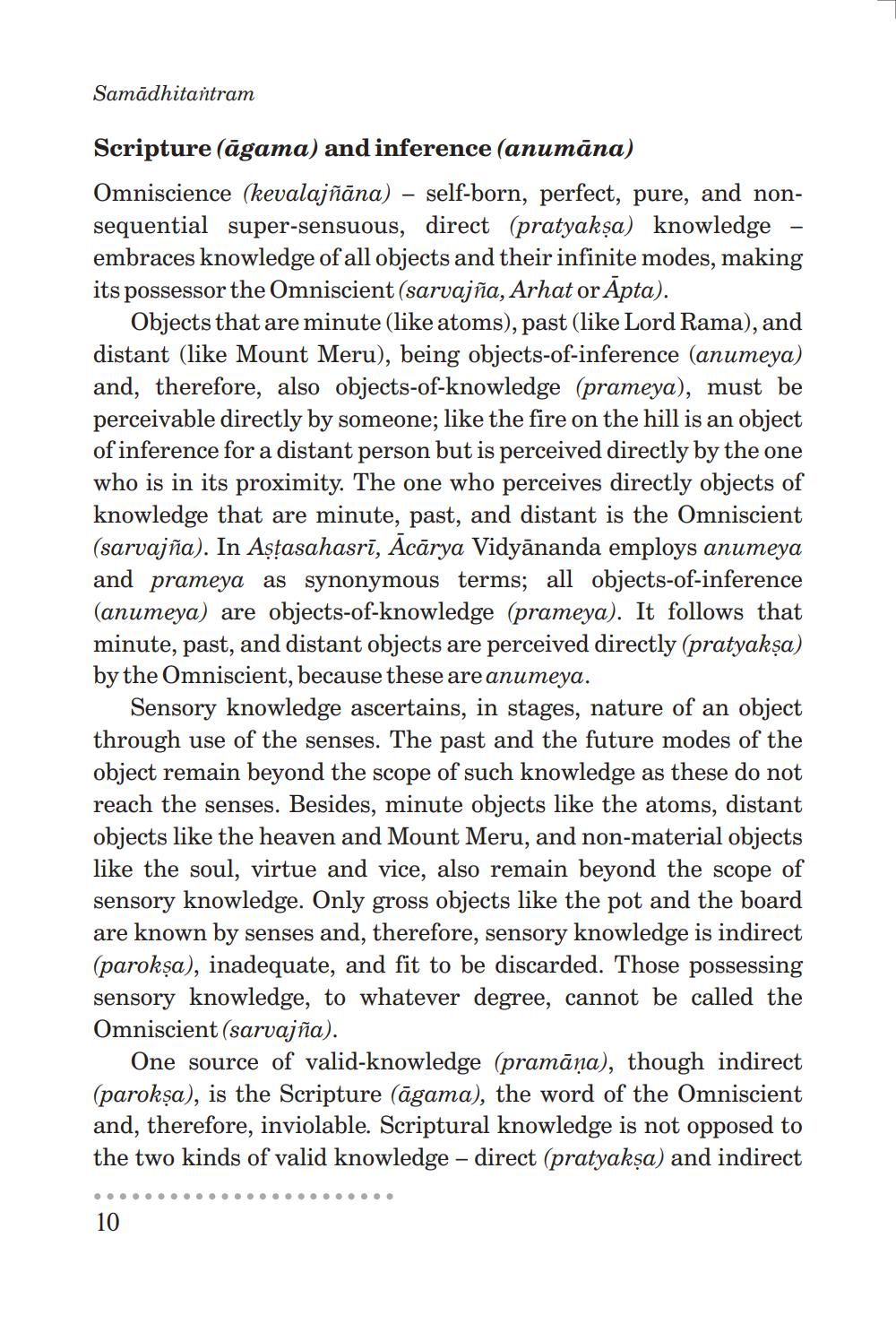________________
Samādhitantram
Scripture (āgama) and inference (anumāna) Omniscience (kevalajñāna) – self-born, perfect, pure, and nonsequential super-sensuous, direct (pratyakşa) knowledge – embraces knowledge of all objects and their infinite modes, making its possessor the Omniscient (sarvajña, Arhat or Āpta).
Objects that are minute (like atoms), past (like Lord Rama), and distant (like Mount Meru), being objects-of-inference (anumeya) and, therefore, also objects-of-knowledge (prameya), must be perceivable directly by someone; like the fire on the hill is an object of inference for a distant person but is perceived directly by the one who is in its proximity. The one who perceives directly objects of knowledge that are minute, past, and distant is the Omniscient (sarvajña). In Aşțasahasrī, Acārya Vidyānanda employs anumeya and prameya as synonymous terms; all objects-of-inference (anumeya) are objects-of-knowledge (prameya). It follows that minute, past, and distant objects are perceived directly (pratyakşa) by the Omniscient, because these are anumeya.
Sensory knowledge ascertains, in stages, nature of an object through use of the senses. The past and the future modes of the object remain beyond the scope of such knowledge as these do not reach the senses. Besides, minute objects like the atoms, distant objects like the heaven and Mount Meru, and non-material objects like the soul, virtue and vice, also remain beyond the scope of sensory knowledge. Only gross objects like the pot and the board are known by senses and, therefore, sensory knowledge is indirect (parokşa), inadequate, and fit to be discarded. Those possessing sensory knowledge, to whatever degree, cannot be called the Omniscient (sarvajña).
One source of valid-knowledge (pramāņa), though indirect (paroksa), is the Scripture (agama), the word of the Omniscient and, therefore, inviolable. Scriptural knowledge is not opposed to the two kinds of valid knowledge - direct (pratyakşa) and indirect
10




